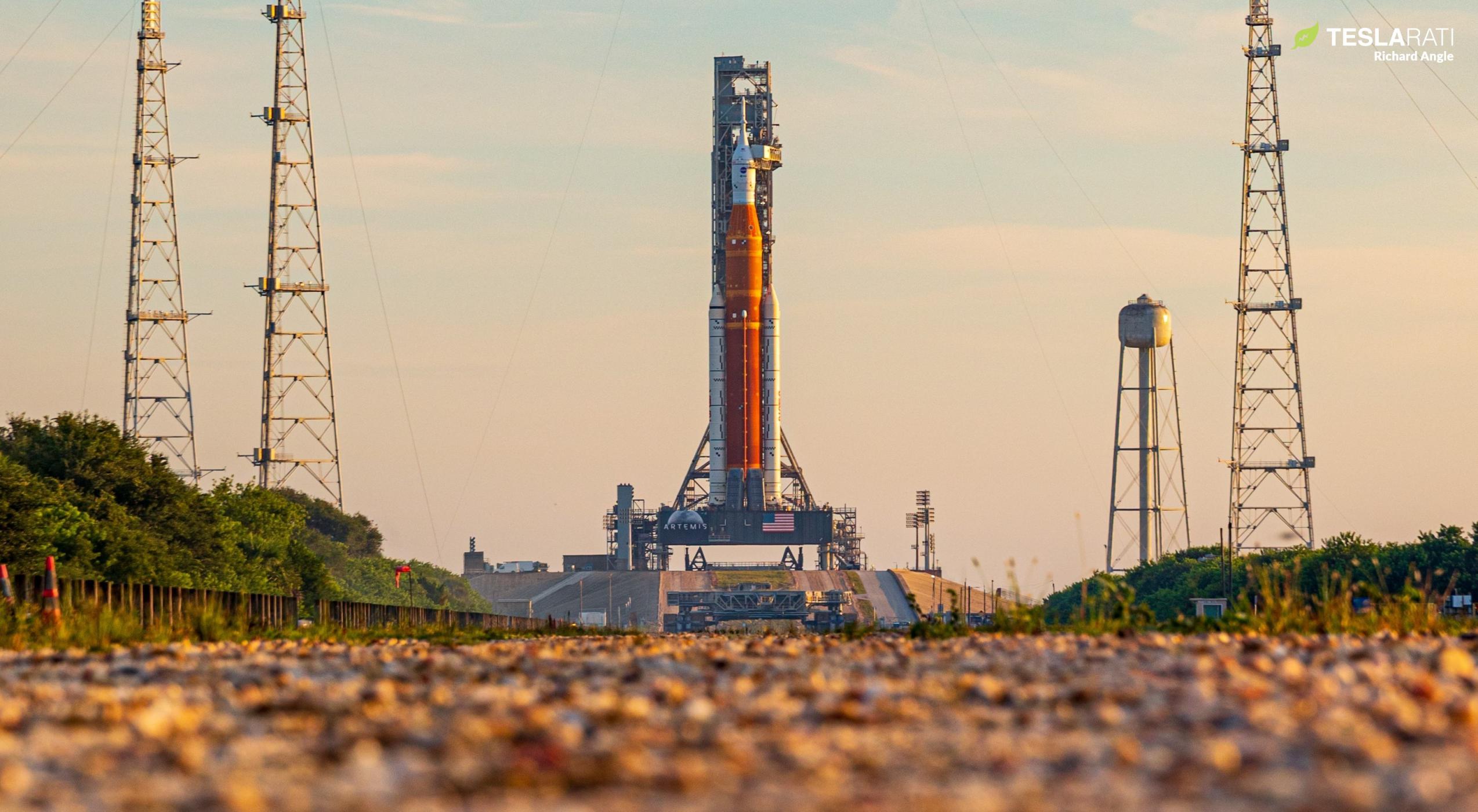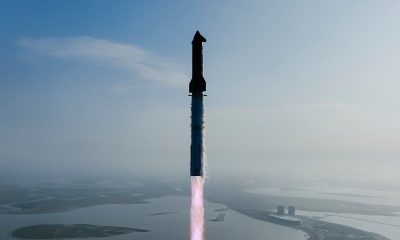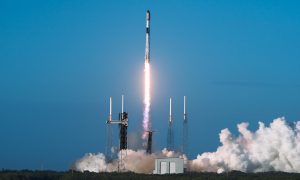

News
NASA to retry Artemis I Moon rocket launch on Saturday
NASA says it has alleviated issues that arose during its first Space Launch System (SLS) Moon rocket launch attempt and will try again as early as Saturday, September 3rd.
Measuring around 98 meters (~322 feet) tall and capable of launching up to 95 tons (~210,000 lb) to low Earth orbit, the SLS rocket’s first launch – Artemis I – will attempt to send NASA Orion spacecraft on its way to lunar orbit. If all goes to plan, a partial prototype of the deep space crew transport vehicle will enter orbit spend several weeks around the Moon, where it will attempt to prove that Orion is safe and ready to launch NASA astronauts.
Approximately six years behind schedule and tens of billions of dollars over budget, the combined Orion spacecraft and SLS rocket were originally expected to debut in 2016 when Congress legally required NASA to develop the combined system in 2011. It would be difficult for the stakes to be much higher.
Now, after an unsuccessful August 29th launch attempt that turned into a wet dress rehearsal test as a result of poor planning, NASA is ready to try again.
SLS is scheduled to lift off from NASA’s Kennedy Space Center (KSC) LC-39B pad no earlier than (NET) 2:17 pm EDT (18:17 UTC) on Saturday, September 3rd. Like the first, the window lasts for two hours, providing some flexibility for NASA to troubleshoot any other minor problems that might crop up during the second launch attempt.
During the first SLS launch attempt, several problems arose, including a possible crack in Core Stage foam insulation, a misbehaving vent valve, a hydrogen fuel leak, and weather concerns that delayed the start of propellant loading by more than an hour. The most important problem, causing NASA to abort its first attempt at T-40 minutes to liftoff, involved Core Stage engine chill systems.
At the time, available data suggested that one of the Core Stage’s four modified and flight-proven Space Shuttle Main Engines (known as RS-25) was unable to chill down to the temperatures required for safe ignition. In a September 1st press conference, after more analysis, NASA now says that the rocket was, in fact, correctly trickling liquid hydrogen fuel through all four engines and that all engines were likely ready to go. The agency and its contractors say they are confident that the true cause of the unfavorable readings was a faulty temperature sensor.
In an earlier press conference, senior officials noted that the Boeing-built SLS Core Stage is designed in a way that makes those faulty temperature sensors virtually inaccessible without major work – and certainly not while the rocket is still at the launch pad. A rollback to NASA’s Vehicle Assembly Building (VAB) could easily delay the next SLS launch attempt by 4-6 weeks, if not longer.
Perhaps as a result of the looming consequences of another rollback, instead of sending the rocket back to fix the newly discovered sensor issue, NASA officials now say they never actually needed the broken sensor and can get by without it working properly. That doesn’t entirely explain why NASA fully aborted an SLS launch attempt as a direct result of not liking the data produced by said sensor a few days prior. Nonetheless, the officials say that by analyzing several other unspecified telemetry readings within the RS-25s and SLS plumbing, they can effectively infer that the engines have been chilled to the right temperature.
In theory, if no other issues arise in the remaining 40 minutes leading up to launch, that should allow NASA to confidently launch SLS without having to replace components deep within the rocket.
NASA will begin live coverage of its next SLS launch attempt on NASA TV at 5:45 am EDT (09:45 UTC), followed by a separate hosted broadcast (the agency’s first attempt at a 4K launch webcast) beginning at 12:15 pm EDT (16:15 UTC).
Elon Musk
Tesla reveals it is using AI to make factories more sustainable: here’s how
Tesla is using AI in its Gigafactory Nevada factory to improve HVAC efficiency.

Tesla has revealed in its Extended Impact Report for 2024 that it is using Artificial Intelligence (AI) to enable its factories to be more sustainable. One example it used was its achievement of managing “the majority of the HVAC infrastructure at Gigafactory Nevada is now AI-controlled” last year.
In a commitment to becoming more efficient and making its production as eco-friendly as possible, Tesla has been working for years to find solutions to reduce energy consumption in its factories.
For example, in 2023, Tesla implemented optimization controls in the plastics and paint shops located at Gigafactory Texas, which increased the efficiency of natural gas consumption. Tesla plans to phase out natural gas use across its factories eventually, but for now, it prioritizes work to reduce emissions from that energy source specifically.
It also uses Hygrometric Control Logic for Air Handling Units at Giafactory Berlin, resulting in 17,000 MWh in energy savings each year. At Gigafactory Nevada, Tesla saves 9.5 GWh of energy through the use of N-Methylpyrrolidone refineries when extracting critical raw material.
Perhaps the most interesting way Tesla is conserving energy is through the use of AI at Gigafactory Nevada, as it describes its use of AI to reduce energy demand:
“In 2023, AI Control for HVAC was expanded from Nevada and Texas to now include our Berlin-Brandenburg and Fremont factories. AI Control policy enables HVAC systems within each factory to work together to process sensor data, model factory dynamics, and apply control actions that safely minimize the energy required to support production. In 2024, this system achieved two milestones: the majority of HVAC infrastructure at Gigafactory Nevada is now AI-controlled, reducing fan and thermal energy demand; and the AI algorithm was extended to manage entire chiller plants, creating a closed-loop control system that optimizes both chilled water consumption and the energy required for its generation, all while maintaining factory conditions.”
Tesla utilizes AI Control “primarily on systems that heat or cool critical factory production spaces and equipment.” AI Control communicates with the preexisting standard control logic of each system, and any issues can be resolved by quickly reverting back to standard control. There were none in 2024.
Tesla says that it is utilizing AI to drive impact at its factories, and it has proven to be a valuable tool in reducing energy consumption at one of its facilities.
Elon Musk
Tesla analysts believe Musk and Trump feud will pass
Tesla CEO Elon Musk and U.S. President Donald Trump’s feud shall pass, several bulls say.

Tesla analysts are breaking down the current feud between CEO Elon Musk and U.S. President Donald Trump, as the two continue to disagree on the “Big Beautiful Bill” and its impact on the country’s national debt.
Musk, who headed the Department of Government Efficiency (DOGE) under the Trump Administration, left his post in May. Soon thereafter, he and President Trump entered a very public and verbal disagreement, where things turned sour. They reconciled to an extent, and things seemed to be in the past.
However, the second disagreement between the two started on Monday, as Musk continued to push back on the “Big Beautiful Bill” that the Trump administration is attempting to sign into law. It would, by Musk’s estimation, increase spending and reverse the work DOGE did to trim the deficit.
Every member of Congress who campaigned on reducing government spending and then immediately voted for the biggest debt increase in history should hang their head in shame!
And they will lose their primary next year if it is the last thing I do on this Earth.
— Elon Musk (@elonmusk) June 30, 2025
President Trump has hinted that DOGE could be “the monster” that “eats Elon,” threatening to end the subsidies that SpaceX and Tesla receive. Musk has not been opposed to ending government subsidies for companies, including his own, as long as they are all abolished.
How Tesla could benefit from the ‘Big Beautiful Bill’ that axes EV subsidies
Despite this contentious back-and-forth between the two, analysts are sharing their opinions now, and a few of the more bullish Tesla observers are convinced that this feud will pass, Trump and Musk will resolve their differences as they have before, and things will return to normal.
ARK Invest’s Cathie Wood said this morning that the feud between Musk and Trump is another example of “this too shall pass:”
BREAKING: CATHIE WOOD SAYS — ELON AND TRUMP FEUD “WILL PASS” 👀 $TSLA
She remains bullish ! pic.twitter.com/w5rW2gfCkx
— TheSonOfWalkley (@TheSonOfWalkley) July 1, 2025
Additionally, Wedbush’s Dan Ives, in a note to investors this morning, said that the situation “will settle:”
“We believe this situation will settle and at the end of the day Musk needs Trump and Trump needs Musk given the AI Arms Race going on between the US and China. The jabs between Musk and Trump will continue as the Budget rolls through Congress but Tesla investors want Musk to focus on driving Tesla and stop this political angle…which has turned into a life of its own in a roller coaster ride since the November elections.”
Tesla shares are down about 5 percent at 3:10 p.m. on the East Coast.
Elon Musk
Tesla scrambles after Musk sidekick exit, CEO takes over sales
Tesla CEO Elon Musk is reportedly overseeing sales in North America and Europe, Bloomberg reports.

Tesla scrambled its executives around following the exit of CEO Elon Musk’s sidekick last week, Omead Afshar. Afshar was relieved of his duties as Head of Sales for both North America and Europe.
Bloomberg is reporting that Musk is now overseeing both regions for sales, according to sources familiar with the matter. Afshar left the company last week, likely due to slow sales in both markets, ending a seven-year term with the electric automaker.
Tesla’s Omead Afshar, known as Elon Musk’s right-hand man, leaves company: reports
Afshar was promoted to the role late last year as Musk was becoming more involved in the road to the White House with President Donald Trump.
Afshar, whose LinkedIn account stated he was working within the “Office of the CEO,” was known as Musk’s right-hand man for years.
Additionally, Tom Zhu, currently the Senior Vice President of Automotive at Tesla, will oversee sales in Asia, according to the report.
It is a scramble by Tesla to get the company’s proven executives over the pain points the automaker has found halfway through the year. Sales are looking to be close to the 1.8 million vehicles the company delivered in both of the past two years.
Tesla is pivoting to pay more attention to the struggling automotive sales that it has felt over the past six months. Although it is still performing well and is the best-selling EV maker by a long way, it is struggling to find growth despite redesigning its vehicles and launching new tech and improvements within them.
The company is also looking to focus more on its deployment of autonomous tech, especially as it recently launched its Robotaxi platform in Austin just over a week ago.
However, while this is the long-term catalyst for Tesla, sales still need some work, and it appears the company’s strategy is to put its biggest guns on its biggest problems.
-

 Elon Musk1 day ago
Elon Musk1 day agoTesla investors will be shocked by Jim Cramer’s latest assessment
-

 News6 days ago
News6 days agoTesla Robotaxi’s biggest challenge seems to be this one thing
-

 News2 weeks ago
News2 weeks agoTesla’s Grok integration will be more realistic with this cool feature
-

 Elon Musk2 weeks ago
Elon Musk2 weeks agoElon Musk slams Bloomberg’s shocking xAI cash burn claims
-

 News2 weeks ago
News2 weeks agoTesla China roars back with highest vehicle registrations this Q2 so far
-

 News2 weeks ago
News2 weeks agoTexas lawmakers urge Tesla to delay Austin robotaxi launch to September
-

 News2 weeks ago
News2 weeks agoTesla dominates Cars.com’s Made in America Index with clean sweep
-

 Elon Musk1 week ago
Elon Musk1 week agoFirst Look at Tesla’s Robotaxi App: features, design, and more




















